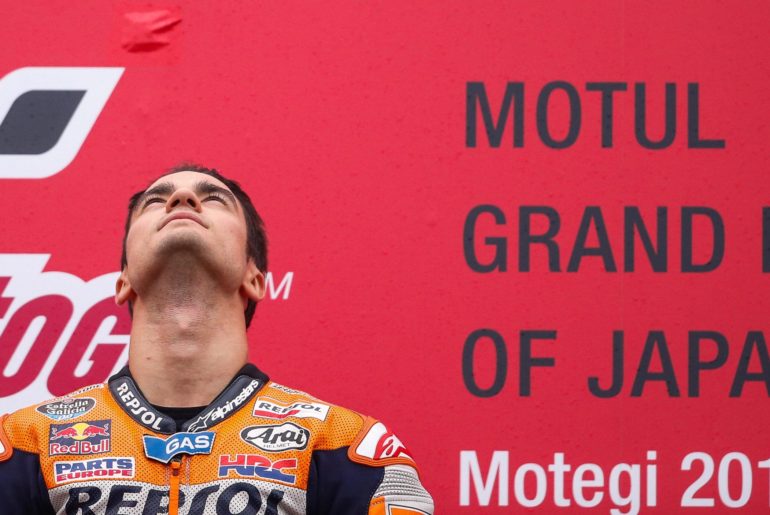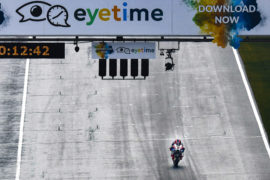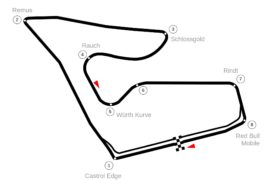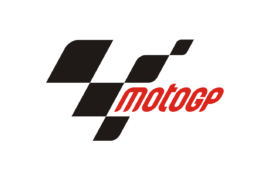After weeks of speculation, Dani Pedrosa has announced that he will end his active racing career at the end of the 2018 season.
The Spaniard had been mulling his future for some time, after it had become clear that there was no place for him left in the Repsol Honda MotoGP team, and after discussions with other teams throughout the first part of the year, Pedrosa made his decision some time after Assen, and announced it at a special press conference held ahead of the German round of MotoGP at the Sachsenring.
“Next year, I will not compete in the championship, this means I will finish my career this season in MotoGP,” Pedrosa told a packed press conference room at the Sachsenring.
“This is a decision I’ve been thinking about for a long time, and it’s a very hard decision because this is the sport I love. But despite having good opportunities to keep racing, I feel like I don’t live racing with such an intensity as before and I now have different priorities in my life.”
“I would like to express how fortunate I feel to have had this opportunity,” he said. “It’s been an amazing life to be racing for such an important team and in front of all the fans. So I can say I achieved way more than I expected and I’m very proud of everything I’ve done in the sport.”
“I fulfilled my dream of becoming a racer and this is something I didn’t expect as a kid watching on TV.” It was an emotional press conference, the normally taciturn Pedrosa fighting to control his emotions.
The announcement had not come as a surprise. It had become clear in the week heading into the Sachsenring that Pedrosa had decided to retire.
He had come close to announcing his retirement at Barcelona, four weeks ago, but the approach from the Petronas Yamaha Team due to race next year had forced him to consider his choice carefully.
“In Barcelona I had the feeling and a more or less clear idea of what would be my decision, but an opportunity showed up, and you never have to close the door to opportunities in that way,” Pedrosa said.
“Finally, I considered the options, and with a bit more time, it’s always better to take these decisions with more time and with your people and with your family, and think about it a little bit longer. But finally, the feeling is the feeling.”
It was the intensity levels needed to be competitive which had been a major factor in his decision. “You have to live the races to the limit and I had to give everything that I had,” Pedrosa told the Spanish media.
“Looking at the project and being realistic this is the direction I have to take. I gave everything I had on the track as well as off it and it’s simply this; I’m a rider that gave my best.” That was a reason to turn down Petronas Yamaha.
“Like I said it was something already coming for a long time and the opportunity I had was a great chance and nothing to say about. It’s just my feeling, my way of approaching life and racing and being honest with myself… This was the decision.”
Road to MotoGP
Dani Pedrosa’s journey to MotoGP started as it finished, with Alberto Puig. The boy from Sabadell, just inland from Barcelona, tried out for a chance to race in the Movistar Activa Cup, a talent-spotting series organized by Honda and Movistar, and watched over by Alberto Puig.
He was accepted, though he could not touch his feet on the ground when sat aside the Honda 125cc two stroke, and finished that year, 1999, as eighth.
At the end of the year, Pedrosa was chosen to race in the Movistar Junior Team in the Spanish 125cc championship by Puig, alongside Raul Jara, who would go on to be his personal trainer and adviser, and Joan Olivé.
Pedrosa’s elevation was a choice made by Puig, who believed that he saw something special in the young Spaniard, though it was met with resentment from other riders in the class who finished ahead of him.
After finishing fourth in the Spanish championship, Pedrosa made his debut in Grand Prix racing in 2001 at the age of 15, riding a Honda 125 with the Telefonica Movistar Junior Team, with Joan Olivé and Toni Elias as teammates.
Pedrosa got off to a solid start, taking two podiums, at Valencia and Motegi, in his first season, and winning rookie of the year. That his podiums came at those two circuits would prove to be no coincidence, as he would go on to be extremely successful there throughout his career.
The Winning Starts
In 2002, Pedrosa won his first Grand Prix, taking victory at the Dutch TT in Assen. He won two more races, at Valencia and Motegi again, in what would turn out to be a remarkable run of seasons with a race win.
Since 2002, Pedrosa has won at least one Grand Prix in each of the sixteen seasons he has competed. Pedrosa remains winless so far in 2018, but even if he does not win a race this year, that is a record of success which will remain standing for a very long time.
Pedrosa won his first 125cc title in 2003, with a victory at Sepang with two races to go. The next week, at Phillip Island, Pedrosa crashed heavily and broke both ankles, and forced to miss to races.
Injuries would go on to become a recurring theme throughout his career, causing him to consider retirement on more than one occasion, and eventually becoming a factor in his decision to stop racing.
After a tough road to recovery, Pedrosa moved up to the 250cc class the following season, winning both his first race on the bigger bike, and winning the 250cc championship at the first go. The next year, 2005, he would repeat that feat, securing his third World Championship title at Phillip Island.
A Hiccup Along the Road
In 2006, he moved up to MotoGP as teammate to Nicky Hayden. Pedrosa’s role in the team rankled with American fans, who saw Pedrosa as receiving special treatment while Hayden was in the middle of a titanic championship battle with Valentino Rossi.
HRC were giving Hayden parts to test when he would have preferred to focus on the title chase. Things reached a head at the penultimate round in Estoril, when Pedrosa made a rookie mistake going into Turn 6 and lost the front, wiping Hayden out in the attempt.
Pedrosa promised to make amends at Valencia, and though he had little chance to help Hayden, the fact that the American went on to win the 2006 title went a long way to healing any rift there may have been between the two.
Hayden repeatedly told the press in the years following his title that he had long forgiven Pedrosa for the crash, and thought nothing more of it. Though on occasion, he would add, “But I don’t know if I would have if I hadn’t won the title.”
The Spaniard took over as the number one rider from Hayden the following year, at the start of the 800cc era, and what would become a difficult period for Honda.
HRC lost its way, first underestimating how much power other manufacturers – especially Ducati – could squeeze from an 800cc four-cylinder four stroke, and building a bike that was neither fast nor stable.
It took until the 2010 season for Honda to build a competitive RC212V, Pedrosa finishing as runner up in the championship behind Jorge Lorenzo.
Pedrosa came closest to winning a title in 2012, when he finished second again behind Jorge Lorenzo.
But he was plagued by bad luck, the cruelest blow coming at Misano, where he had qualified on pole, but a problem with a tire warmer sticking to a brake disc forced him to start the race from the back of the grid, after which he was promptly taken out by Hector Barbera in the first corner.
Teammates and Injuries
Three major factors stood in the way of Pedrosa winning a MotoGP title, despite winning 31 MotoGP races, making him the eighth most successful rider of all time in the premier class.
Two of those factors were his teammates, Pedrosa being paired first with Casey Stoner, and then when the Australian retired, with Marc Márquez.
Stoner and Márquez are arguably the two most naturally talented riders to race in MotoGP, with Stoner taking one title with Honda, and Márquez winning four of the five championships he has competed in.
There are numerous graphics doing the rounds showing Pedrosa’s injuries, with this one, put together by British broadcaster BT Sport, summing them up. Pedrosa has had so many X-rays, gone under the surgeon’s knife so often, that it became a factor in his behavior.
The most devastating injury for Pedrosa came at Motegi in 2010, in yet another crash caused by a mechanical error, this time a sticking throttle causing him to be thrown into the gravel at Turn 9, badly breaking his left collarbone in the incident.
The surgery to plate that collarbone was not quite as successful as it should have been, the plate and screws putting pressure on his subclavian artery, which supplies blood to the arms.
In race conditions, riding a MotoGP bike, the plate was reducing blood flow to the arm leading to Pedrosa feeling he was losing strength in that arm, and unable to grip the handlebars successfully.
The Spaniard struggled with that feeling for nearly six months, his doctors unable to pinpoint exactly what the problem was. It left him both physically and mentally drained, Pedrosa giving serious consideration to retiring unless a solution could be found.
Once the issue with the plate was identified, he was able to have surgery to solve the problem, and get back to full fitness again.
But the crash had also left him wary of surgery. When he was taken out by Marco Simoncelli at Le Mans the following year, Pedrosa prevaricated a long time before agreeing to surgery to plate the collarbone.
It remained an issue for the Spaniard throughout his career, and in the end, pushed him towards retirement.
Size Matters
It is hard to say whether Pedrosa’s size and weight played a factor in the severity of the injuries he has accumulated over the years, but it was always a question for debate.
Weighing around the 50kg mark, 10-15kg less than his rivals, he was often accused of having an unfair advantage because he weighed so little. The laws of physics dictate that having less mass means you can accelerate more quickly, but those in the know always dismissed that as far too simplistic.
Yes, if Pedrosa had been racing rockets, his lower weight would have been a straightforward benefit. But motorcycles are not rockets, no matter how often they are compared to them.
Acceleration for a motorcycle comes first from traction, traction requires a certain amount of grip, and having both some weight and body size to move around makes that easier to manage.
When I interviewed Mike Leitner, Pedrosa’s crew chief at the time, back in 2011, this was exactly the point he made.
“I think in MotoGP we are looking mainly for traction. I think that one big issue for bikes with 250 horsepower is to put the power on the ground. So for me, I would wish Dani is 15 cm taller and I would wish he is 10 kilos heavier!”
Being shorter had also given Pedrosa an added sensitivity to how the bike behaves. Unable to manage the bike by moving his body around, he had to develop a greater feel for what the bike was doing, and how to get the best from it.
“Small riders are always very, very sensitive to every small change on the bike,” Leitner told me. “Looking at Dani’s bike balance, I worked with other riders, also in 250, they were much less sensitive, you know?”
“You change let’s say preload on the bike or you change positions on the bike, and others really didn’t feel it. For Dani, sometimes very small changes, just one click could have an unbelievable effect.”
The Tire Factor
That sensitivity also made itself apparent when it came to tires. Pedrosa thrived in the era of custom-made tires, as Michelin could tailor tires with a softer construction and rubber to generate heat in the tire.
Other riders benefited from that as well – the similarly-sized Toni Elias’ only win in MotoGP came at Estoril in 2006, when he was given a set of tires Michelin specially manufactured for Pedrosa, which the Repsol Honda rider had rejected.
When MotoGP switched to a spec tire, the rear Bridgestone lacked grip for everyone, meaning Pedrosa had very little disadvantage.
Pedrosa had been instrumental in bringing about the move to a spec tire, though that was very far from his intention. At the end of the 2007 season, Valentino Rossi had switched from Michelin to Bridgestone, in the belief that he needed the Japanese tires to take on Casey Stoner, who had beaten him to the 2007 title.
In the second half of the 2008 season, Pedrosa demanded to switch from Michelin to Bridgestone, a remarkable change which was pushed through after the Misano round in 2008.
That precipitated an avalanche of other teams wanting to make the switch, leaving just a handful of teams wanting to stick with Michelin, and forcing Michelin to decide to pull out of MotoGP.
A few races later, the Grand Prix Commission decided to make MotoGP a spec tire series, and concluded a contract with Bridgestone as the official tire supplier.
Going Back
The switch back to Michelins in 2016, after Bridgestone decided to withdraw as single tire supplier, worked out well for Pedrosa at first. The rear tire of the Michelin warmed up much more quickly, giving him the grip which he needed.
But the switch to a harder rear tire in response to two incidents with MotoGP’s largest riders – Loris Baz at Sepang, and Scott Redding in Argentina – robbed Pedrosa of feel from the rear, a problem even worse in the wet.
Though he continued to win races and score poles, he never seemed to threaten at the same level. When you added in more races missed due to injury – another broken collarbone sustained in a crash at Motegi – it was easy to believe he had lost his edge.
That impression could be deceptive, however: Pedrosa’s wins at Jerez and Valencia in 2017 were impressive, and the way he took on Valentino Rossi at Aragon, and held off Johann Zarco at Valencia, suggested he still had plenty of fight left in him.
In the end, injuries also played a role in his decision to retire, tipping the scales toward stopping rather than carrying on. With limited options, and the prospect of a couple of seasons on a bike outside a factory team (though potentially with factory support), Pedrosa chose to stop rather than continue.
“For sure it accelerates the process of arriving to a moment like this,” Pedrosa said in the press conference. “I think sport now is ‘claiming’ much more life than in the past and people are stopping far earlier; which is a good thing. But it’s true that the injuries accelerated things for me and stopped me giving 100%.”
Hard Choices
His hand had been forced by the man with whom he had started his career. When Alberto Puig was made Repsol Honda team manager, one of his first decisions was to get rid of Pedrosa to make room for someone else.
As it turned out, that will be Jorge Lorenzo, that Lorenzo was not in the frame when Puig made his decision at the start of this year. With Suzuki bosses choosing the young Joan Mir over Pedrosa, and the Petronas Yamaha ride his only competitive option, Pedrosa’s choice was made easier.
His post-career plans will also have been a factor: having spent his entire career with Honda, the Spaniard will have some kind of role as brand ambassador for Honda, which will no doubt leave him well rewarded.
If he had left Honda to race a Yamaha, then returning to Honda as a brand ambassador would have been more complicated, and less lucrative.
How will Dani Pedrosa be remembered? Arguably, as the greatest rider to never win a MotoGP title, and this shortcoming is the one thing which fans latch onto as a sign that he was not the great rider others believe him to be.
That does Pedrosa woefully short, however: he has ridden against some of the greatest riders of all time, all of whom are destined to have entire chapters dedicated to them in history books.
Valentino Rossi, Casey Stoner, Marc Márquez, Jorge Lorenzo, between them they have won every MotoGP title since 2007, as well as five more before that as well as dominating the top step in the premier class.
Yet Pedrosa lined up every week on the grid as the only other rider capable of beating them regularly, and forcing them to work hard for their championships.
Pedrosa was very highly rated by both his peers and by senior figures throughout the paddock. The Spaniard started every season being named as a potential title candidate by his rivals.
Cal Crutchlow even went so far as to claim that if Pedrosa had been on a Yamaha, a bike which is much less physically demanding to ride, he would have won at least one championship. In the end, though, Pedrosa chose to remain loyal to Honda throughout his career, and retires without a MotoGP crown.
Pedrosa regretted not winning a MotoGP title, but put that down to circumstances, some of which were out of his control.
“I was able to be champion in other categories,” Pedrosa said. “MotoGP was about certain circumstances…but I’ll take the fact that I gave the best I could in difficult situations. To feel pleasure in this for me personally is the most important.”
“I would have loved to have had a more ‘robust’ physique to resist some impacts! I’ll keep the moments when I’ve been on the podium or when I could give 100% and do things on the bike that I know I could do. It doesn’t always go as you want but sometimes it does but everything has its natural place.”
Legend
Pedrosa’s place will be as a MotoGP Legend, Dorna CEO Carmelo Ezpeleta announcing Pedrosa will be formally inducted as MotoGP Legend at the final race of the 2018 season in Valencia. Ezpeleta expressed his appreciation for all that Pedrosa had achieved throughout his career.
“I remember when he was so small to be riding a bike and he was at Jarama for the selection to try to race,” Ezpeleta said. “Then he has made incredible years with us, his results and especially his behavior has been an example for everyone.”
Making Pedrosa a MotoGP Legend was a token of just how highly regarded he is by the organization, Ezpeleta said.
“I think it’s a small contribution from the championship, for what he has been doing throughout his career It has been a big pleasure, as Dorna CEO and a friend of Dani, to share with him all these years and I hope he will continue with us, doing other things.”
Ezpeleta praised the professionalism with which Pedrosa carried himself.
“The decision he has made, and he didn’t say nothing, it’s a very honest and loyal decision. He had – in the last discussions – everything to continue. But being honest with himself, he has decided to retire. Not all people would do the same. I want to tell him again, thank-you and thank-you for the example you have given to us.”
Photo:
This article was originally published on MotoMatters, and is republished here on Asphalt & Rubber with permission by the author.




